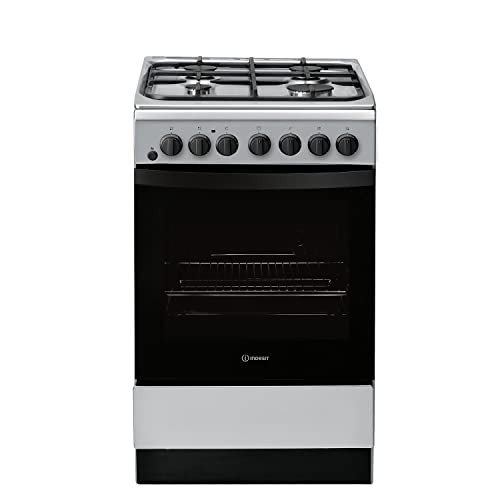“The Ultimate Cheat Sheet” On Oven And Hob
The Complete Guide to Ovens and Hobs: Choosing the Right Appliances for Your Kitchen
When it concerns creating cooking work of arts, the importance of quality kitchen home appliances can not be overemphasized. Ovens and hobs are the heart of any kitchen, allowing home cooks and expert chefs alike to create, bake, and sauté scrumptious meals. Understanding the different types of ovens and hobs, along with their features and functionalities, is important for making informed acquiring choices. This article offers an extensive take a look at ovens and hobs, helping you navigate the options available so that you can boost your kitchen's performance and adaptability.
Comprehending Ovens
Ovens are vital for cooking and baking and can be found in different types to fulfill varied culinary requirements. Here is a summary of the most typical kinds of ovens:
1. Traditional Ovens
Standard ovens work by warming the air inside with gas or electric aspects. They are best for baking cakes, roasting meats, and cooking casseroles.
2. Convection Ovens
These ovens utilize a fan to flow hot air, supplying an even temperature level throughout, which can considerably decrease cooking times. They are perfect for baking cookies or roasting veggies.
3. Microwave Ovens
Microwaves cook food quickly utilizing electromagnetic radiation. They are best for reheating leftovers or thawing frozen foods however are not appropriate for browning or crisping.
4. Wall Ovens
Integrating a wall oven into your kitchen style can conserve space and create a sleek aesthetic. They function much like traditional or stoves however are built into the wall for simple access.
5. Variety Ovens
These ovens integrate stovetop burners with an oven, offering versatility for those who choose a single appliance for all cooking requirements.
Type
Cooking Method
Best For
Conventional
Electric/Gas
Baking, roasting
Convection
Air flow
Quick cooking, even baking
Microwave
Electro-magnetic
Reheating, thawing
Wall Ovens
Electric/Gas
Space-saving, sleek style
Variety Ovens
Electric/Gas
Versatile cooking
Exploring Hobs
Hobs, likewise called cooktops or stovetops, provide the surface to cook pans straight over a heat source. Like ovens, hobs are available in various types, which can be categorized as follows:
1. Gas Hobs
These hobs use a flame for cooking and supply immediate heat control. They are preferred by many chefs for their responsiveness and accuracy.
2. Electric Hobs
Electric hobs use coils or flat surfaces to heat pans. They offer a consistent heat source, however they might take longer to cool off compared to gas hobs.
3. Induction Hobs
Induction hobs utilize electromagnetic energy to heat pots and pans straight, making them extremely efficient and much faster to prepare. They are likewise much easier to clean as the surface area remains fairly cool.
4. Strong Plate Hobs
These are older technology that uses strong metal plates to offer heat. They are durable however are less efficient than modern choices.
Type
Heat Source
Advantages
Disadvantages
Gas Hobs
Flame
Instant heat control
Requires gas connection
Electric Hobs
Electric coils
Consistent heat
Slower to cool down
Induction Hobs
Electro-magnetic
Quick cooking, energy-efficient
Requires compatible cookware
Strong Plate Hobs
Strong metal plate
Durability
Less effective
Selecting the Right Appliances
Selecting the best oven and hob for your kitchen involves thinking about different factors:
1. Space and Layout
Measure your kitchen location to identify the size and positioning of the oven and hob. Make sure there is adequate ventilation, specifically for gas home appliances.
2. Cooking Style
Think about how typically you cook and the kind of meals you prepare. A stove may suit avid bakers, while someone who frequently stir-fries may choose an induction hob.
3. Energy Source
Choose on the energy source that best fits your lifestyle. Gas uses immediate control, while electric and induction hobs supply ease of use and are typically more energy-efficient.
4. Budget
Identify your budget plan for kitchen appliances. Ovens and hobs vary significantly in cost, depending upon functions and brand names. Prioritize important functions that fulfill your needs.
5. Functions
Try to find performances such as self-cleaning options, clever technology compatibility, specific rack setups for ovens, and security features for hobs.
Often Asked Questions (FAQs)
Q1: What is the distinction between a traditional oven and a convection oven?A1: Conventional ovens warm the air inside without fans, while stove make use of a fan to circulate hot air for more even cooking. Q2: Can I use aluminum cookware on induction hobs?A2: No, induction hobs need ferrous (magnetic )materials like cast iron or stainless-steel to work effectively. Q3: Do gas hobs heat much faster than electric hobs?A3: Yes, gas hobs provide instant heat, making them much faster for cooking compared to electric hobs. Q4: Is it safe to utilize a microwave oven?A4: Yes, when used according to the producer's instructions, microwave are thought about safe for cooking.
Q5: How often ought to I clean my oven and hob?A5: For optimal performance, tidy your oven routinely, specifically after spills. Hobs should be cleaned down after each usage
to avoid accumulation. Ovens and hobs
are essential parts of a fully equipped kitchen. Understanding the various types, their performances, and the factors to consider involved in buying
them can considerably boost cooking experiences. Whether Buy Oven Online is a casual home cook or a professional chef, investing time in selecting the best appliances can lead to cooking success and fulfillment in the kitchen. By focusing on functions that align with your cooking design, energy sources that fit your home, and budget considerations, you can produce an effective office that inspires cooking creativity. 